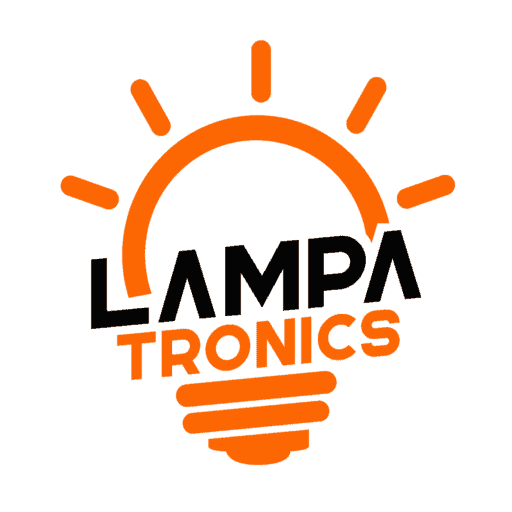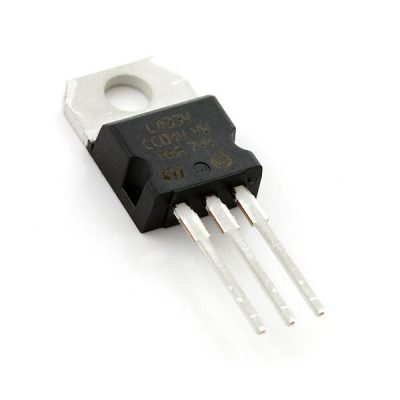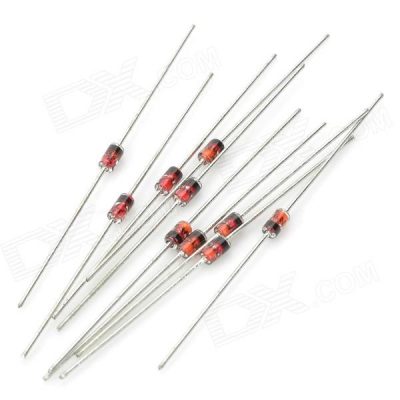74265 (Octal D-type Flip-Flop with 3-state outputs)
Description
The 74265 is an Octal D-type Flip-Flop with 3-state outputs. It is similar to the 74574, but with the added feature of no reset (clear) functionality and a slightly different configuration. It is part of the 7400 series of logic ICs and is commonly used in digital systems for data storage, shifting, and output control.
74265 IC Description:
The 74265 is an Octal D-type flip-flop with 3-state outputs. The flip-flops are edge-triggered and update their state on the rising edge of the clock input. The 3-state outputs make it ideal for driving shared data buses, as it allows individual devices to either output data or be placed into a high-impedance state, effectively disconnecting from the bus.
Key Features:
- 8 D-type Flip-Flops: The IC contains 8 individual D-type flip-flops, allowing for 8 bits of data storage.
- 3-State Outputs: The outputs are tri-state, meaning they can be in one of three states: high (1), low (0), or high-impedance (Z), making it ideal for bus-based systems.
- Clocked Operation: The flip-flops are edge-triggered and capture data on the rising edge of the clock signal.
- No Clear Pin: Unlike some other flip-flops, the 74265 does not include an active-low clear pin, which simplifies the design in certain systems.
- Enable Pin: The Output Enable (OE) pin controls whether the flip-flops’ outputs are actively driven or placed in a high-impedance state.
Pin Configuration (16-pin package):
Here’s the pinout for the 74265 Octal D-type flip-flop with 3-state outputs:
- Pin 1 (Q1): Output of flip-flop 1.
- Pin 2 (Q2): Output of flip-flop 2.
- Pin 3 (Q3): Output of flip-flop 3.
- Pin 4 (Q4): Output of flip-flop 4.
- Pin 5 (Q5): Output of flip-flop 5.
- Pin 6 (Q6): Output of flip-flop 6.
- Pin 7 (Q7): Output of flip-flop 7.
- Pin 8 (Q8): Output of flip-flop 8.
- Pin 9 (OE – Output Enable): Active-low pin to enable or disable the outputs.
- Pin 10 (Clock): Clock input for all flip-flops, triggered on the rising edge.
- Pin 11 (D1): Data input for flip-flop 1.
- Pin 12 (D2): Data input for flip-flop 2.
- Pin 13 (D3): Data input for flip-flop 3.
- Pin 14 (D4): Data input for flip-flop 4.
- Pin 15 (D5): Data input for flip-flop 5.
- Pin 16 (Vcc): Supply voltage (typically 5V).
How It Works:
- Data Storage:
- The 74265 contains 8 individual D-type flip-flops that store one bit of data each. Data is input to the flip-flops through the D1 to D8 pins.
- On the rising edge of the clock signal, the data present on the D inputs is latched and transferred to the corresponding Q outputs.
- 3-State Outputs:
- The outputs are tri-state, meaning they can be in one of three states: high (1), low (0), or high-impedance (Z).
- The Output Enable (OE) pin controls whether the outputs are active or placed in the high-impedance state. When OE is low, the outputs reflect the stored data. When OE is high, the outputs are placed in a high-impedance state, effectively disconnecting them from the circuit.
- Clocking:
- The flip-flops update their stored data on the rising edge of the clock signal. This means that data is latched into the flip-flops only when the clock transitions from low to high.
- No Clear Pin:
- Unlike some other similar flip-flops, the 74265 does not have an active-low clear (reset) pin. This means it lacks the ability to reset all outputs to 0 directly. However, data can still be cleared externally by other means if needed.
Truth Table:
| OE (Output Enable) | Clock (CLK) | D (Data) | Q (Output) | Output State |
|---|---|---|---|---|
| High | – | – | High-Z | Outputs in high-impedance (Z) |
| Low | Rising Edge | 0 | 0 | Q follows D input |
| Low | Rising Edge | 1 | 1 | Q follows D input |
Applications:
- Bus Systems: The 74265 is ideal for data bus applications, where multiple devices share a common data line. The tri-state outputs allow the device to either drive the bus with data or disconnect from the bus when not needed.
- Data Latching and Storage: The IC can be used to latch and store data temporarily in digital systems, making it useful in systems requiring parallel data storage.
- Memory Systems: It can function as a part of digital memory systems, where temporary storage of multiple bits is needed.
- Shift Registers: The flip-flops can be used in conjunction with other devices to create shift registers for serial-to-parallel data conversion.
- Parallel I/O: It can be used in systems where parallel I/O is required, such as interfacing with microcontrollers, data buses, or other parallel data processing units.
- Control Systems: The 74265 can be used to store control bits or configuration settings in systems like programmable logic controllers (PLCs) or other control systems.
Electrical Characteristics:
- Supply Voltage (Vcc): Typically 5V, but it can also work in a range of 4.5V to 5.5V.
- Current Consumption: Since the IC is CMOS-based, it has low power consumption.
- Output Drive: The IC is capable of driving TTL-compatible outputs and can handle the logic levels required for most digital circuits.
Example Circuit:
In a microcontroller-based system, you may need to store 8 bits of data. You can use the 74265 to store this data in parallel. The D inputs would be connected to the output of the microcontroller, and the Clock pin would be controlled by the microcontroller to latch data into the flip-flops. The OE pin could be used to control whether the stored data is available on the output pins (Q1 to Q8) or if the outputs are in a high-impedance state.
Only logged in customers who have purchased this product may leave a review.
- Image
- SKU
- Rating
- Price
- Stock
- Availability
- Add to cart
- Description
- Content
- Weight
- Dimensions
- Additional information






Reviews
There are no reviews yet.